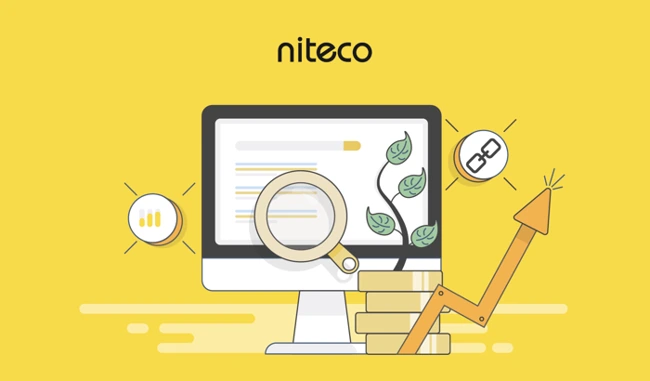If you run a small or mid-sized business, SEO can feel vague. This plan makes it concrete. This SEO strategy template sets a clean baseline, builds a keyword map, publishes useful pages, speeds up your site, and earns credible links. You’ll also track a simple scorecard so you can show progress to your team or board.
What you’ll need
-
Access to CMS, analytics (GA4), and Google Search Console.
-
A crawler (any reputable one), a spreadsheet, and 8–10 hours a week for technical SEO checks.
-
One owner who drives the plan and meets weekly with stakeholders.
Weeks 1–2: Baseline & quick wins for your SEO strategy template
Start by seeing what Google already “knows” about you. Verify your site in Search Console and ensure GA4 is collecting clean data. Crawl all URLs to find obvious blockers in on-page SEO and indexing.
Checklist
-
Titles in the 60–65 character window, unique per page.
-
One H1 per page, descriptive and human.
-
Fix 404s and redirect chains; update internal links to the final URLs.
-
Add missing meta descriptions (140–160 chars) that preview value.
-
Publish trust pages (About, Contact, Privacy).
-
Submit XML sitemaps; check Coverage/Indexing.
Write down 3 “fast wins” you can finish this fortnight (e.g., fix broken nav links, add internal links to top money pages, publish an FAQ on your highest-traffic page). These show momentum while you build the full plan.
Weeks 3–4: Keyword map & on-page polish (add keyword research)
Create a keyword map: one page per primary keyword, with supportive variations grouped by intent. For example, a “Plumbing Services Brisbane” page gets the primary; “emergency plumber Brisbane” might become a dedicated sub-page if intent is urgent.

On-page template (copy it):
-
H1: includes the primary once.
-
Intro (100–150 words): problem → promise → proof.
-
H2s: match the sub-topics people expect (features, pricing, steps, FAQs).
-
Body: short sentences, examples, and screenshots.
-
Schema: FAQ or Product/Service where relevant.
-
CTA: one clear next step.
-
Links: 3–5 internal, 1–2 high-quality external citations.
This keeps your site organised and prevents two pages from targeting the same intent.
Weeks 5–6: Content engine & internal links (start link building the right way)

Now publish helpful pages that others want to cite.
Pick four assets:
-
A comparison page (“Service A vs Service B: which suits your case”).
-
A pricing explainer (transparent ranges; what changes price).
-
A how-to that solves a real problem.
-
A checklist or template (people love reusable docs).
Internal linking playbook
-
From every new article, link to one service page with a descriptive anchor.
-
Edit three older posts per week; add links to the new content.
-
Use breadcrumbs and “Related reading” to surface depth.
This builds topical authority and keeps readers moving toward conversion.
Weeks 7–8: Technical reliability & speed — Core Web Vitals in your SEO strategy template
Run a deeper pass on performance and UX. Aim for “good” Core Web Vitals wherever possible (LCP, INP, CLS). Compress and properly size images; serve next-gen formats like WebP; lazy-load below the viewport. Auditing with GSC’s Core Web Vitals report shows field data from real users—more reliable than lab only.
Ensure canonical tags on variants (e.g., tracking params), check robots directives, and confirm your sitemap lists only indexable URLs. Small fixes here prevent big ranking leaks.
Weeks 9–10: Local visibility & trust (boost local SEO)
If you serve specific towns or suburbs, optimise your Google Business Profile. Choose the right categories, add services and products, upload real photos, and keep hours accurate. Don’t use P.O. boxes or virtual offices—Google forbids them. Encourage reviews and respond to each one. Add location pages with unique content, not boilerplate.
Trust signals matter. Add team bios with credentials, case studies with outcomes, and clear policies. Visitors should feel safe to contact or buy.
Weeks 11–12: Links, PR, and review cycle — your SEO roadmap check-in
Earn links that make sense for an SME:
-
Partners & suppliers: ask for “Preferred Partner” listings.
-
Local associations: chambers, industry bodies, directories with vetting.
-
Unlinked mentions: set alerts; when someone cites you, ask for a link.
-
Expert quotes: contribute 100–150-word tips to relevant articles.
Then review your KPI scorecard. Compare to Week 1. Keep tactics that moved the needle; plan next quarter around those.
What top pages miss (and you will include)
-
A one-page keyword map you can open in a meeting.
-
A 90-day calendar with exact weekly actions.
-
A scorecard that a non-marketer can read in 60 seconds.
-
A lightweight link plan any SME can execute safely.
We’ve laid out this 90-day plan to demystify SEO and give you a clear, actionable roadmap. We also know that for a busy SME owner, finding 8–10 hours a week can feel like a second job. If navigating crawlers, building keyword maps, and tracking Core Web Vitals feels overwhelming, don’t worry—SEYO can help with small business SEO. Tell us about your goals via our Contact Us page, and our team will review your details and get back to you with a clear, next-step plan. Partner with experts to make this simpler and more effective, while you stay focused on running your business.





